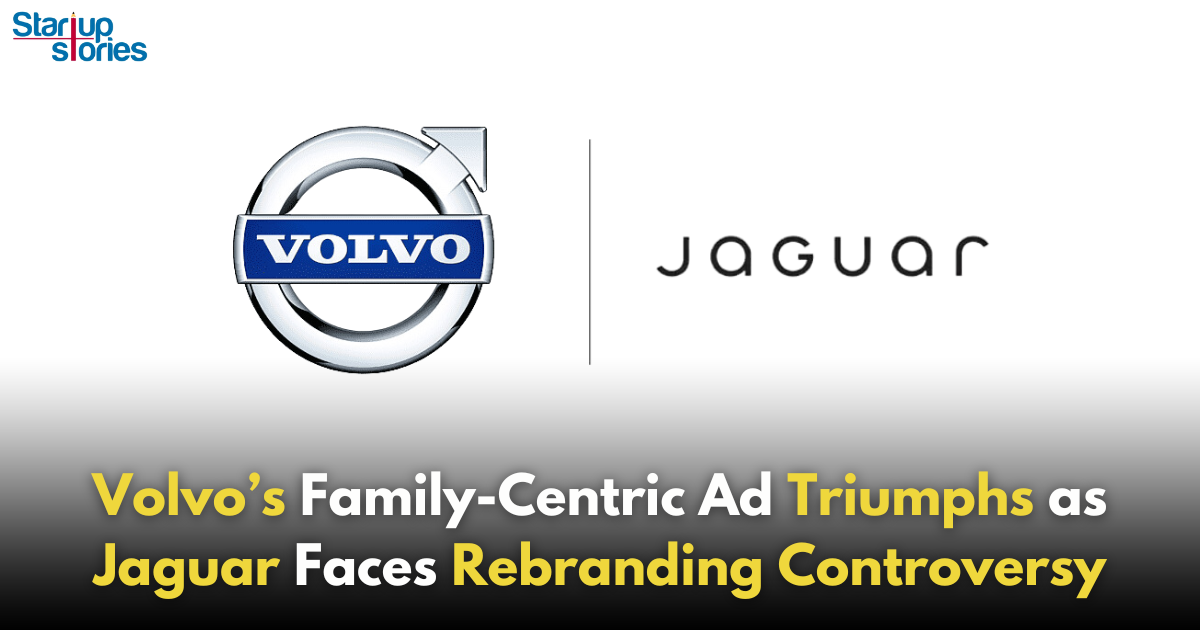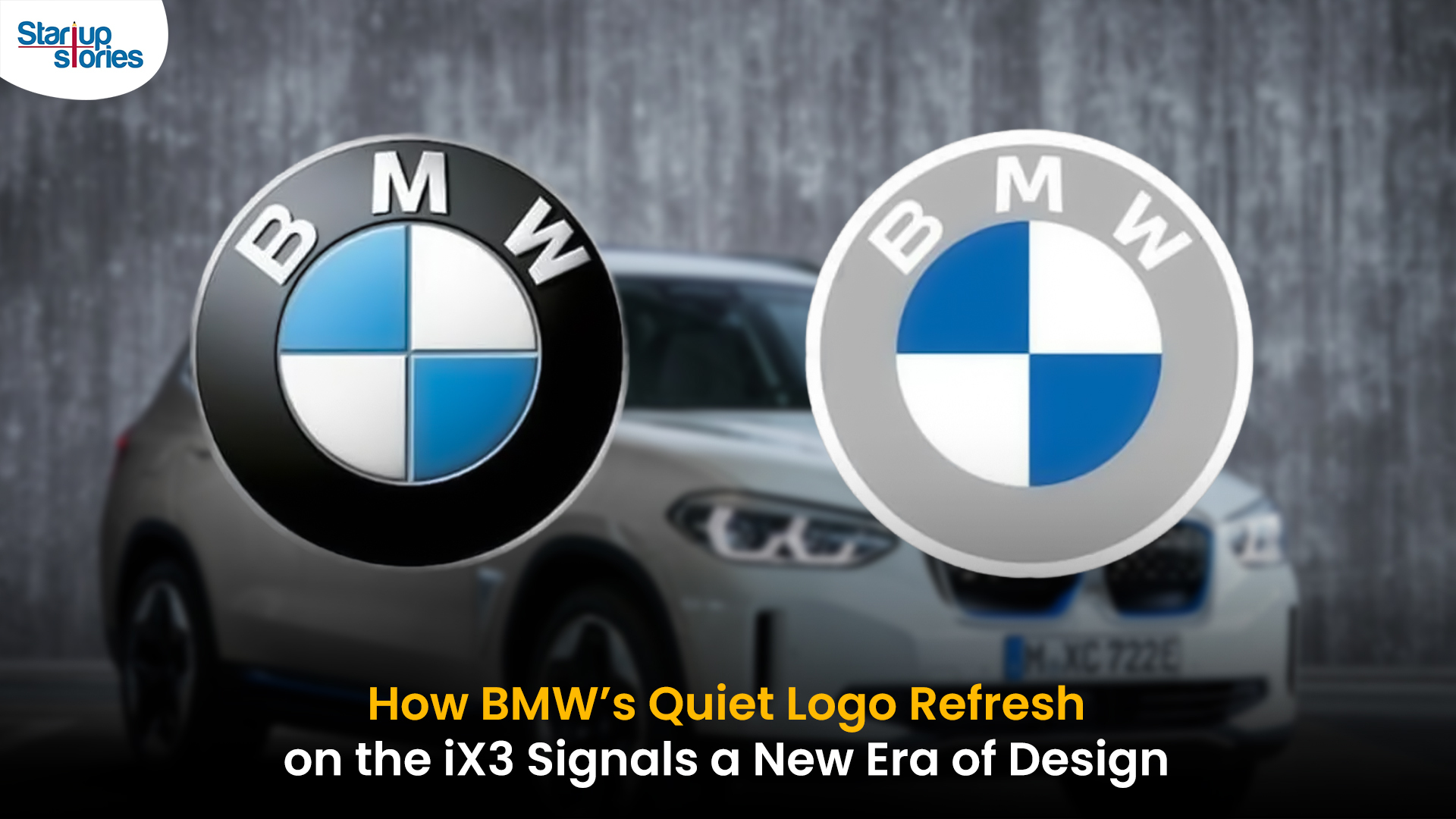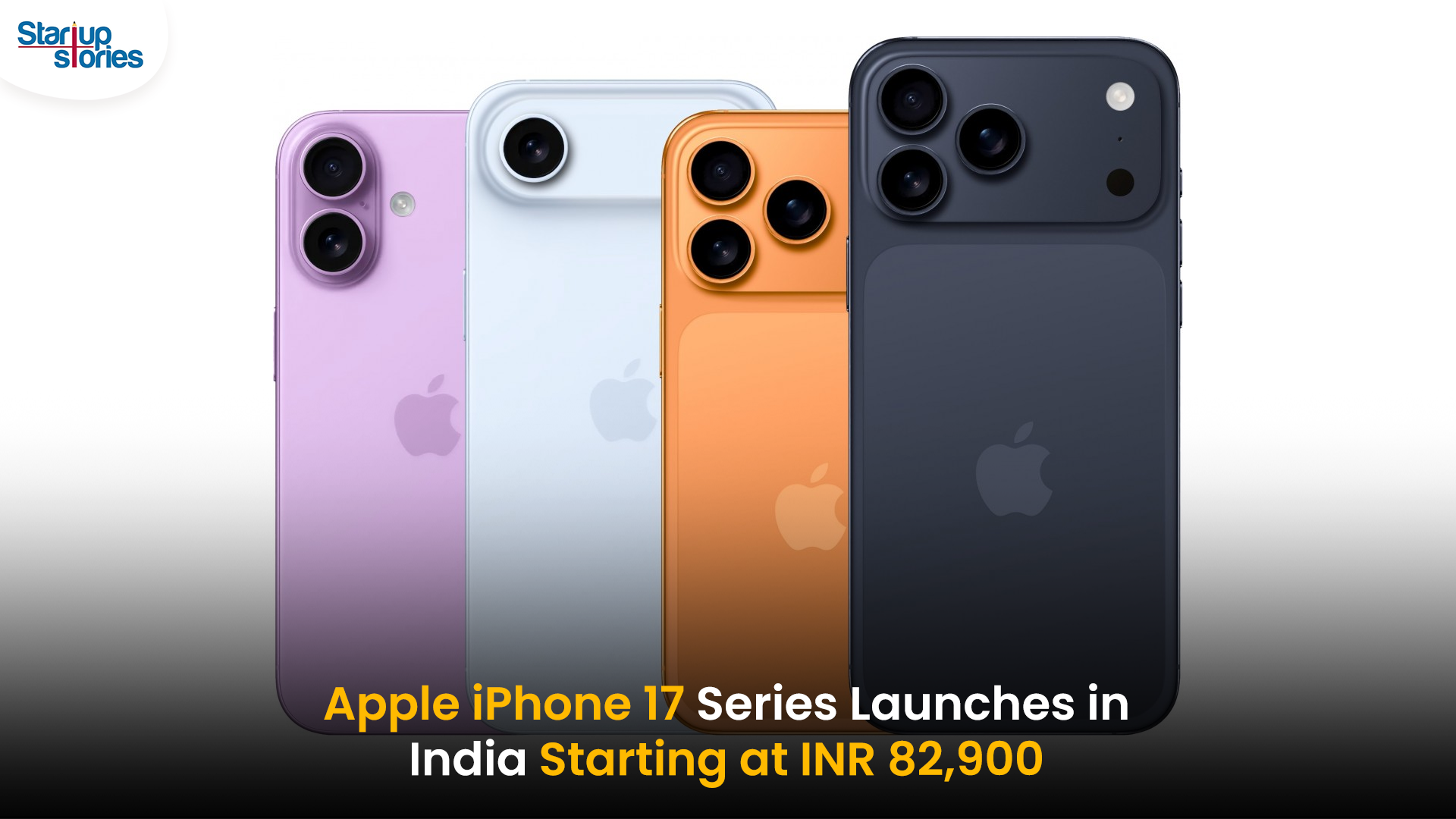News
Volvo’s Family-Centric Ad Shines as Jaguar Faces Backlash Over Rebranding!

In the competitive landscape of advertising and branding, the ability to resonate with audiences while staying true to a brand’s identity is a delicate art. Recent campaigns from automotive giants Volvo and Jaguar highlight the stark difference between success and misstep in this endeavor. While Volvo’s pro-family advertisement has garnered widespread praise, Jaguar’s rebranding efforts have sparked significant backlash, underscoring the importance of understanding audience sentiment and delivering authentic messaging.
Volvo’s Pro-Family Ad Strikes a Chord
Volvo, synonymous with safety, reliability, and family-friendly vehicles, reinforced its core values with a heartfelt campaign centered on family and togetherness. The ad showcased diverse families navigating everyday moments, emphasizing not only road safety but also the importance of nurturing relationships.
Emotional Resonance
This narrative of connection and stability resonated strongly with viewers, especially in a time when many long for a return to traditional values amidst a rapidly changing world. Social media was abuzz with praise for the campaign’s wholesome content and its ability to avoid divisive messaging.
- One Twitter user wrote, “Volvo reminds us why we trust them—safety, family, and authenticity.”
- Another commented, “This ad is a testament to how staying true to your values wins hearts.”
The campaign’s simplicity and relatability helped Volvo strengthen its bond with existing customers while attracting new admirers, showcasing that authenticity and emotional storytelling can have a profound impact.
Jaguar’s Rebranding Misfire
In stark contrast, Jaguar’s recent rebranding attempt to position itself as a modern, edgy luxury brand has drawn significant criticism. The company unveiled a new logo and marketing strategy aimed at appealing to younger, trend-conscious consumers. However, this shift was seen by many as a departure from the brand’s legacy of sophistication and timeless elegance.
Criticism of New Direction
Jaguar’s promotional content leaned heavily on projecting a trendy image but was met with disappointment. Critics felt the new approach alienated Jaguar’s loyal customer base.
- One viral social media post captured the sentiment: “Jaguar used to symbolize class and refinement. Now it feels like they’re chasing trends at the expense of their identity.”
- The new logo was another point of contention, with many calling it generic and uninspired—a sharp departure from the brand’s iconic designs.
Beyond aesthetics, the backlash also reflected deeper frustrations. Critics argued that Jaguar’s strategy was emblematic of a broader issue in luxury branding—abandoning legacy values to chase fleeting relevance, ultimately risking the dilution of what makes these brands unique.
Why Volvo Triumphed and Jaguar Faltered
The contrasting reactions to these campaigns offer valuable insights into branding and marketing strategies:
- Staying True to Brand Identity:
Volvo’s campaign succeeded because it embraced the brand’s established image of safety and family-oriented values. Rather than attempting a reinvention, the ad reinforced what customers already love. Jaguar, in contrast, seemed to pivot away from its core identity, alienating long-time supporters in the process.
- Understanding Audience Needs:
Volvo tapped into universal desires for connection and stability—values that resonate across generations. Jaguar’s strategy to target younger, trend-driven audiences overlooked the fact that these consumers may not be its primary luxury car buyers, misjudging the brand’s core audience.
- Authenticity is Key:
Audiences value genuine messaging. Volvo’s campaign felt natural and aligned with its legacy, while Jaguar’s rebranding came across as forced and inauthentic, leading to accusations of pandering.
- The Impact of Storytelling:
Volvo’s ad excelled in storytelling, creating an emotional connection by depicting relatable family moments. Jaguar’s campaign lacked the same narrative depth, relying instead on aesthetics that failed to resonate.
Conclusion
The divergent outcomes of Volvo’s and Jaguar’s campaigns serve as a reminder that successful branding hinges on authenticity, audience understanding, and staying true to a brand’s essence. Volvo’s pro-family narrative reinforced its legacy while connecting emotionally with its audience, earning widespread acclaim. Conversely, Jaguar’s attempt at modernization led to backlash that underscores the risks of losing sight of what makes a brand special.
For brands navigating today’s complex consumer landscape, Volvo’s approach offers a compelling blueprint: resonate with values, tell genuine stories, and remain true to your core identity. As companies continue to adapt in an ever-evolving market, these principles will be crucial for fostering lasting connections with consumers.
News
BMW’s New Logo Debuts Subtly on the All-Electric iX3: A Modern Evolution

BMW quietly debuted its new logo on the all-electric iX3, marking a significant yet understated shift in the brand’s design direction for 2025. The updated emblem retains the classic roundel and Bavarian blue-and-white colors, but sharp-eyed enthusiasts noticed subtle refinements: the inner chrome ring has been removed, dividing lines between blue and white are gone, and the logo now features a contemporary satin matte black background with slimmer “BMW” lettering. These enhancements showcase BMW’s embrace of modern minimalism while reinforcing their commitment to premium aesthetics and the innovative Neue Klasse philosophy for future electric vehicles.
Unlike rival automakers that reveal dramatic logo changes, BMW’s refresh is evolutionary and respectful of tradition. The new badge ditches decorative chrome and blue borders associated with earlier electric models, resulting in a flatter, more digital-friendly design that mirrors recent branding seen in BMW’s digital communications. Appearing first on the iX3’s nose, steering wheel, and hub caps, this updated identity will gradually be adopted across all BMW models—both electric and combustion—signaling a unified brand language for years to come.
BMW’s strategic logo update represents more than just aesthetic reinvention—it underscores the brand’s dedication to future-ready mobility, design continuity, and a premium EV experience. As the new roundel begins rolling out on upcoming BMW vehicles, it stands as a testament to the automaker’s depth of detail and thoughtful evolution, offering subtle distinction for keen observers and affirming BMW’s iconic status in the ever-changing automotive landscape.
News
iPhone 17 India Price, Features & Availability: All You Need to Know

Apple has officially launched the highly anticipated iPhone 17 series in India, with prices starting at INR 82,900 for the base 256GB model. The new lineup includes the iPhone 17, iPhone 17 Pro, iPhone 17 Pro Max, and the newly introduced ultra-slim iPhone Air. Apple has removed the 128GB storage variant, making 256GB the minimum for all models. The standard iPhone 17 features a vibrant 6.3-inch ProMotion OLED display with a 120Hz refresh rate and an upgraded Ceramic Shield 2 for improved durability. It comes in fresh color options like lavender, mist blue, sage, white, and black.
The iPhone 17 Pro and Pro Max models are powered by Apple’s latest A19 Pro chip and start at INR 1,34,900 and INR 1,49,900, respectively. These Pro models feature sleek titanium frames, significant camera upgrades including 8K video recording, and up to 6x optical zoom in the Pro Max. Meanwhile, the iPhone Air, priced from INR 1,19,900, is the slimmest and lightest iPhone ever, boasting a 6.7-inch Super Retina XDR display with ProMotion technology and a triple-camera setup, positioning itself between the standard and Pro models.
Pre-orders for the iPhone 17 series commence on September 12, with sales beginning on September 19, 2025. Alongside the launch, Apple has reduced prices for the previous iPhone 16 models while discontinuing the iPhone 16 Pro and Pro Max variants. The iPhone 17 series exemplifies Apple’s ongoing commitment to enhancing display technology, camera capabilities, and overall performance, setting a new benchmark for premium smartphones in the Indian market.
Startup News
Meet the 13 Deeptech Startups Empowered by BIGShift Accelerator in India

India’s deeptech ecosystem has reached a significant milestone with the launch of BIGShift, a premier accelerator programme by Inc42 and India Accelerator designed to empower early-stage startups developing breakthrough technologies. The first cohort comprises 13 innovative startups addressing complex challenges in fields such as artificial intelligence, aerospace, robotics, healthcare, and geospatial analytics. These startups benefitted from specialized capital-readiness training, strategic mentorship, and direct access to investors interested in supporting high-risk, high-reward deeptech ventures, making BIGShift a crucial platform for nurturing India’s next-generation technology leaders.
The accelerator programme uniquely combines virtual bootcamp sessions with a comprehensive two-day in-person masterclass, equipping startups with advanced go-to-market strategies, funding expertise, and a valuable network of experienced operator-mentors. Noteworthy startups from the cohort include ActionSync, focused on enterprise data unification; Polygon Geospatial, delivering AI-powered real-time spatial analytics; Purna AI, which innovates in preventive health through genetic biomarkers; Spacetaxi, pursuing reusable commercial rockets; and VertiFly, specializing in hybrid eVTOL aerial mobility solutions. This diverse group exemplifies the ingenuity and pioneering spirit of Indian deeptech entrepreneurship across multiple high-impact sectors.
BIGShift’s inaugural cohort not only accelerates technological development but also provides critical support mechanisms like pilot project matchmaking, regulatory guidance, and facilitating enterprise collaborations. As these 13 startups transition their groundbreaking solutions from the lab to the marketplace, BIGShift is poised to be a catalyst for deeptech innovation in India, helping transform scientific research into scalable, impactful businesses that will shape the country’s technological future.














Hpektnew
May 27, 2025 at 12:28 am
Explore the ranked best online casinos of 2025. Compare bonuses, game selections, and trustworthiness of top platforms for secure and rewarding gameplayBonus offer.
elqtcijbe
July 17, 2025 at 4:20 pm
Detsamma gäller om man äter mat med högt GI. Skadeeffekterna minskar om man samtidigt äter mat med lågt GI. Det gör att det sammantagna GI- värdet för måltiden sjunker. Om t.ex. socker kombineras med andra livsmedel – i synnerhet grönsaker eller nyttiga fetter – fördröjs upptaget av socker i kroppen, blodsocker- och insulintopparna jämnas ut och graden av inflammation minskar. Athletics Hd Dv Action Camera Full High Definition 1008p Wi-fi Ucuz Bakı Və Azərbaycanda Ən Sərfəli Qiymətlərlə Satış! Content Son Dəqi̇qə! Putindən Istefa Tələbi Rəsmi̇ləşdi̇ – Kremldən Şok Bəyanat Azərbaycan Neftinin Qiyməti Seventy Seven Dolları Keçdi Azərbaycan Neftinin Qiyməti 76 Dollara Düşdü Sonuncu Finalçı Misir Millisi Oldu İtaliya Klubu Nestanı Istefaya Göndərdi Seyv Edən Qapıçı:…
https://magdagaya.cat/2025/07/16/czy-bizzo-casino-jest-legalne-w-polsce-i-na-jakiej-podstawie-dziala_1752664202/
Alcohol Denat., Aqua (Water), Parfum (Fragrance), Silicone Quaternium-17, Ethylhexyl Methoxycinnamate, Butyl ethoxydibenzoylmethane, Ethylhexyl Salicylate, Alpha-Isomethyl Ionone, Benzyl Benzoate, Benzyl Salicylate, Cinnamyl Alcohol, Citronellol, Coumarin, Limonene, Geraniol, Hexyl Cinnamal, Hydroxycitronellal, Linalool Gotowy na grę za prawdziwe pieniądze? Kliknij BDMBet casino i rozpocznij swoją podróż po prawdziwe pieniądze z Sugar Rush w BDMBet, gdzie słodycze nie są jedynymi rzeczami, które mogą skończyć się bogactwem. A jeśli nie wygrywasz, pamiętaj—prawdopodobnie cukierki mają zjazd cukrowy! Kasyno online w sugar rush Ponadto możliwe jest wyświetlanie tylko gier od wybranego dostawcy oprogramowania wśród armii najlepszych w tej klasie, który można bezpiecznie używać z kartą eco.
qqcpwrjlw
July 21, 2025 at 1:36 pm
Slots themed around North American wildlife are often popular, but why has the Buffalo slot machine become one of the most successful games in history, both online and offline? The great design is one thing, with powerful animals across the 5 reels, but it also has some impressive features. The Island has it all! Our gaming floor is packed with more than 1,800 slot, video poker and video keno machines, 40 table games, a poker room and a 500-seat high stakes bingo hall. Before or after a day of baseball at Sahlen Field, visit any Seneca Resorts & Casinos property and receive Free Slot Play with your ticket stub. $15 Free Slot Play, $15 Free Table Bet or $15 Dining Dollars and the chance to earn more! Penny slots earned their name by allowing bets of just $0.01, but players can find nickel, dime, and quarter slots too, all the way up to slots that require a minimum of $100 or more a spin (known as high limit slots). Players should expect most of their spins to lose or trigger a payout lower than the total wager, so it’s crucial to find a game that allows for an appropriate bet level per spin given your budget. Then again, playing free slots eliminates this problem, because you’re not risking your own money.
https://www.wilk-agency.com/2025/07/15/bonanza-slot-free-play-where-to-try-without-deposit/
The first noticeable difference is the drastically enlarged, albeit technically unremarkable, Megaways setup. Lashed wooden beams prop up 6 main reels holding 2-7 symbols each as well as an up top horisontal reel holding 4 symbols. At full whack, a massive 200,704 ways to win are in play, compared to 4,096 ways of the original. The rest of the view, what you can make out at least, is essentially the same rocks and canyons as before. An outdoorsy soundtrack completes the scene, and fans of the first Buffalo King won’t be scared away by anything too radical, aesthetically, at least. Most people like the game they want to play to give them some impression before they even open the app and start to play. Buffalo King Megaways is one of those. The name says a lot. It’s familiar to those who have played the Buffalo King and want to try something new. It’s about wilderness and inspired by one of the beasts in it — the buffalo.
站群程序
November 6, 2025 at 9:55 pm
采用高效谷歌站群策略,快速提升网站在搜索引擎中的可见性与权重。谷歌站群
站群程序
November 9, 2025 at 5:49 am
搭载智能站群程序,自动化搭建与管理,为SEO项目提供核心驱动力。站群程序
MM88
November 9, 2025 at 11:11 am
Với giao diện mượt mà và ưu đãi hấp dẫn, MM88 là lựa chọn lý tưởng cho các tín đồ giải trí trực tuyến.
iwin
November 13, 2025 at 4:28 pm
iwin – nền tảng game bài đổi thưởng uy tín, nơi bạn có thể thử vận may và tận hưởng nhiều tựa game hấp
GO88
November 15, 2025 at 8:37 am
Tham gia cộng đồng game thủ tại Go88 để trải nghiệm các trò chơi bài, poker phổ biến nhất hiện nay.
J88
November 21, 2025 at 11:24 pm
Đến với J88, bạn sẽ được trải nghiệm dịch vụ cá cược chuyên nghiệp cùng hàng ngàn sự kiện khuyến mãi độc quyền.
MM88
December 1, 2025 at 6:38 pm
Khám phá thế giới giải trí trực tuyến đỉnh cao tại MM88, nơi mang đến những trải nghiệm cá cược thể thao và casino sống động.
create a binance account
December 7, 2025 at 8:49 pm
Your article helped me a lot, is there any more related content? Thanks! https://accounts.binance.info/en-ZA/register?ref=B4EPR6J0